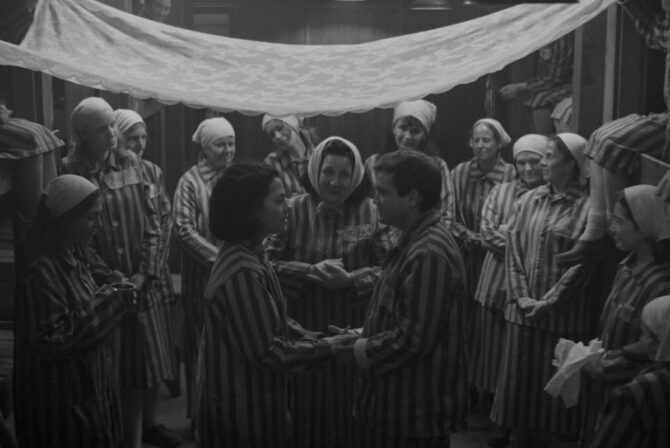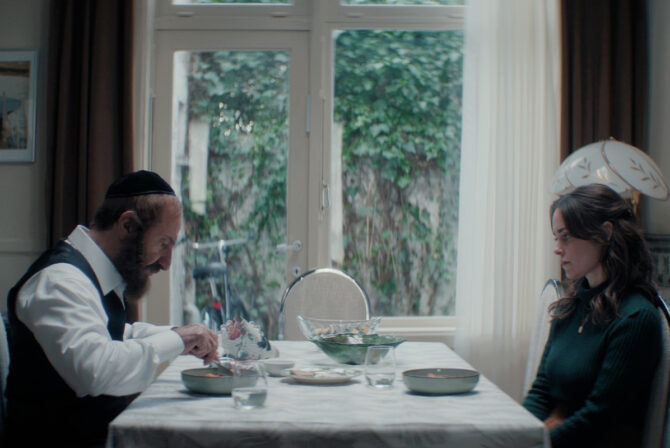Sometimes I dress my infant son in pink, frilly clothes. Sometimes he wears blue, purple, and yellow; other days it’s floral print and polka dots. He has a pair of denim overalls that are particularly adorable, especially when paired with a maroon-and-pink striped shirt with ruched sleeves.
The decision to think in this way about clothing came out of a series of conversations my wife and I had in the months leading up to our baby’s birth. Dressing him in a wide array of colors, patterns, and styles is also absolutely intentional and very important to us.
We’ve made a conscious choice to avoid traditional gendering for our infant, and it’s a decision that demands we be actively aware of the clothes we put on him. Baby stores are notoriously binary places, even online, where each outfit is designated “For Her” or “For Him.” Since I first began shopping for baby clothes, I’ve learned this: Boy clothes are blue, gray, black, and sometimes brown. They say things like “Little Monster” and “Born Wild,” and graphic elements tend to be heavy on sports and tools. “Girl” clothes are slimmer fitting — yes, even in the tiniest of sizes, which is a whole other conversation — and they come in every color imaginable. Except for blue. They have frills and bunches and say things like “Little Sweetheart” and “Mommy’s Angel” and frequently feature hearts, butterflies, and flowers.
That doesn’t really jive with the way my wife and I want to raise our little one.
Our child is an individual and, as such, we want him to have all the options open to him as he grows up. We don’t want to assume that, just because our baby was born with male genitalia, he will feel most comfortable with male pronouns. And, even if he does express his gender within a male prism, this doesn’t mean that he will do so within the narrow scope of traditional masculinity. Indoctrinating him into gender roles early and often is not how we see our parental role.
While we’re on the subject, why can’t my baby be a “Little Sweetheart” and “Born to be Wild” at the same time? Why are these options considered mutually exclusive, relegated to the different sexes upon their emergence into the world? Why don’t we encourage our children to be both — or neither — according to their characters, instead of their privates?
What’s more, if, in the future, our son comes to us and tells us that she is my daughter, I want her to have baby pictures to look back at that reflect who she is fully. I want her to be able to see herself in her past, just as I’m able to look back with a nostalgic eye at pictures of my sisters and me in matching dresses. Anything less than that seems unjust.
When the time comes for our baby to express his (or her, or their) gender we want him to be able to do so fully, with all the options open. For now I use male pronouns when referring to him — mostly because we speak Hebrew, in which gender-neutral language is still evolving — with full awareness that this may change in the future.
Recently, my wife mentioned how exciting it is to her that we don’t know who our baby will be when he is an adult. I wholeheartedly agree — it’s thrilling to learn more about this tiny person each day as he matures. He’s only 6 months old but we already know that he has a great laugh, that he’s incredibly strong and determined, that he loves water and likes to dance to ’70s funk music. We’re eager to let him see, smell, and taste all the options; to try on a multiplicity of identities and see what feels right, and to do so within a comfortable, accepting context that’s devoid of fear. The most important thing is for our child to be able to express their true self, whatever that may mean. Really, the whole world’s a smorgasbord.
As a Jewish person, I believe that God transcends gender, having both male and female attributes. God is referred to in the liturgy with both male and female pronouns, with all sorts of characteristics that are traditionally male and female. For example, El Rahum (“merciful God,” from the Selichot liturgy) is conjugated as a male term, but the Hebrew word rahum comes from the same root as rehem, womb. I believe that God is both Hamakom (male) and Hashekhina (female). Assuming we are all created in God’s image — which is itself a tenet of Judaism — it seems to me that we all have the capacity to hold within us a multiplicity of gender expressions. To limit these to two is to underestimate the human capacity for understanding and to minimize our capacity for connecting to the divine.
Helping a little person navigate the world is an honor we don’t take lightly. We realize that there’s a fine line between adhering to the values we hold dear and allowing for our child to ask questions, challenge, and disagree with us. We don’t want to blindly hold to our belief system without allowing our child to develop individual opinions. I’m certain that a day will come when we are at odds, and I pray that we navigate that day respectfully, with love. We’re trying not to have set expectations for what he’ll like or who he’ll be. We’re trying to be clear about what we believe while remaining open to hearing what he believes as well.
Obviously this is premature, he’s just a baby, but it’s a tall order and we think it’s best to start practicing unconditional acceptance early. My wife and I see ourselves as guides, helping our child find the singular way that will be his own. To this end, we’re calling upon our values, our community, our traditions, and our beliefs to be the beacon by which we guide this ship. Hopefully, with a wide scope and an open heart, our ship will make its way to the shore — regardless of whatever color it’s wearing.
Image by Ian Hooton/Science Photo Library via Getty Images








